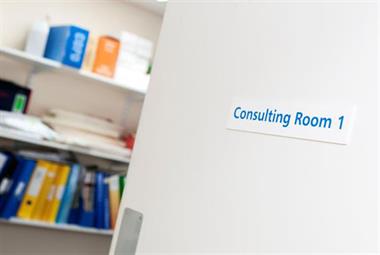As has now been widely publicised, the CQC has abandoned its regular schedule of inspection for all health and social care services, including GP practices. Inspections will now be triggered by perceptions of risk, related to any notifications received by the regulator or any third party concerns or staff whistleblowing.
As has been set out by our colleague Maddi Gaunt in her article written at the end of last year, this new, light touch approach will not necessarily benefit providers. The CQC will enter a service looking for evidence to support the alerts of concern that they have received, rather than looking for 'Good' – which had previously been its starting point.
A further risk of this new approach is that of conclusions, informed by uncorroborated or incorrect evidence arising out of inspections carried out remotely. This could lead to knock-on effects in the form of low-level enforcement action such as the issuing of warning notices.
This type of low level enforcement action can quickly escalate to the CQC taking more serious action, so regulatory breaches captured during inspections or warning notices should not be ignored. Any factual inaccuracies contained with a draft report should be challenged at factual accuracy stage. Ridouts has seen a sharp increase in the number of warning notices issued to GP practices in recent times.
What is a warning notice?
Warning notices are issued where a practice is deemed to have failed to, or is continuing to fail to, comply with a legal requirement. The CQC can issue a warning notice for a past breach, which has been rectified, if it considers the breach was serious enough.
A warning notice must be issued in writing, and must state:
- the relevant legal requirement that the registered person is not complying with;
- how the registered person did not comply or is continuing not to comply;
- and the timescale within which the registered person must comply.
There is no legally-set timescale for complying with a warning notice and the CQC can set any period which it considers reasonable. In accordance with its guidance, that period must reflect the degree of risk to the safety and welfare of people who use the service and must be a realistic and achievable timeframe.
Practices should be aware that the CQC must send a copy of any warning notice that it issues to relevant external bodies, such as the integrated care board (ICB), in line with section 39 of the Health and Social Care Act. This can raise concerns within commissioning bodies and practices may find themselves not only working to convince the CQC that they are a complaint provider but also persuading their commissioner that they are capable of continuing to care for the community safely and without risk.
The CQC frequently publishes warning notices more widely which can lead to an incorrect narrative about your practice being placed in the public domain and even adverse press coverage. For these reasons a robust response is important.
Making representations
The CQC’s powers to issue and publish warning notices are discretionary. Although there is no statutory right of appeal against a warning notice a registered person can make representations about it which can include that:
- the notice contains a serious error;
- is based on inaccurate ‘facts’;
- has not been issued in accordance with the legal test;
- makes requirements that are not reasonable or proportionate; and/or
- it would be unfair to publish it.
Considering the CQC’s new, arm’s length approach to inspection, it is easy to understand how inaccurate facts could potentially arise out of reviews that take place without spending significant periods of time at the practice, witnessing the delivery of services or looking at patient outcomes in person.
Disproportionate judgments and conclusions could easily be reached by reviewing documentation, out of context and without the assistance of the people working at the practice. This is a problem that we see recurring report after report.
If you consider a warning notice has been issued to your practice against that background it is important that you make representations about it and challenge the points that concern you. Even if you do not dispute the facts in the notice it is still possible to make representations as to why it should not be published, for example, because it is not in the public interest or because it relates to a historic breach that has already been rectified. Evidencing that remedy in your representations could make the publication redundant.
It is important that practices act quickly because representations must be made in writing, within 10 working days of receipt of the notice.
CQC response to representations
Once your representations have been reviewed, the CQC can decide to either not uphold the representations, or to uphold them.
If they are upheld then the outcome letter should formally record that the warning notice has been withdrawn.
Once the decision as to whether the representations are upheld or not is reached the CQC will then decide whether to publish the notice. If it withdraws a notice it will not publish the details of it and inform any relevant external bodies who had been informed of the notice that it has been withdrawn.
If a warning notice contains an error that can be rectified, but the CQC considers that it is still appropriate to issue it, then it may decide to withdraw the first notice and issue another.
The CQC will rely on any failure to challenge warning notices as evidence that the practice acknowledges the appropriateness of them. This could lead to more serious problems so a warning notice should be taken seriously and responded to.
Given the new regulatory regime, low level enforcement action can soon snowball and lead to more concerning outcomes, such as notices of proposals to cancel registration or urgent enforcement action, immediately imposing conditions on your registration. Practices must ensure that the CQC’s findings are accurate and that if they do summarise that there have been breaches of regulations (which lead to warning notices) that those allegations of breach are justified.
Practice leads should sit down and carefully review all correspondence and reports from the CQC because simply ignoring enforcement action, even at the lowest level will be taken to imply that the provider accepts it and the cumulative impact of further regulatory action can have catastrophic effects on the service.
- Jenny Wilde is director/solicitor at Ridouts Law
If you require assistance or advice in relation to any issues with the CQC, please contact Ridouts Professional Services Ltd at info@ridout-law.com or by calling 020 7317 0340.
| Ridouts Professional Services Ltd |
|---|
Ridouts is a law firm that only acts for care providers. We provide legal, operational and strategic advice when providers are faced with matters that could negatively impact their businesses, such as poor CQC inspections and enforcement action. www.ridout-law.com |













